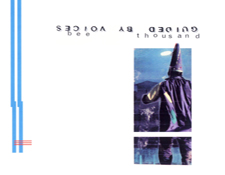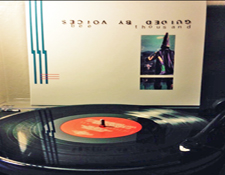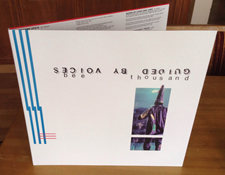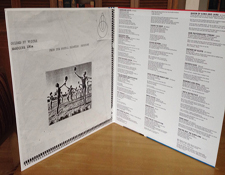It’s the time of year for saving money!
I was recently reminded about a legendary first rock bootleg album called The Great White Wonder. The low-fidelity recording infamously leaked out songs then unreleased by a post-motorcycle accident — and justifiably reclusive –Bob Dylan with his yet-to-be-renamed backing group (formerly known as the Hawks, which had backed him on the 1966 tour). Great White Wonder included recordings made in a basement of a nondescript home in Woodstock, New York, made on relatively modest gear for the times. Relative to Dylan’s prior ground breaking albums — which were made at some of the best studios in the world at the time — these were almost home demos, yet they oozed feeling and presence.
 In fact, those recordings had a sound so haunting, distinctive and refreshing in the face of all the heavy, post-Summer of Love psychedelia, that fans snapped up the poorly pressed unauthorized recording where ever they could find it. (Dylan fans were rabid in their enthusiasm for the man and his music at that time, one must remember, clinging on to his every word as if it were Gospel from up on high.) Eventually Dylan recuperated and came out of his retirement just as some of those songs were officially released on the first album by the Band (Music From Big Pink) as well as on new recordings by other artists including Peter Paul & Mary, the Byrds and Manfred Mann. The legend of the Basement Tapes was sealed, however, and many years later a two-LP official distillation of those tapes was finally released to much fan excitement.
In fact, those recordings had a sound so haunting, distinctive and refreshing in the face of all the heavy, post-Summer of Love psychedelia, that fans snapped up the poorly pressed unauthorized recording where ever they could find it. (Dylan fans were rabid in their enthusiasm for the man and his music at that time, one must remember, clinging on to his every word as if it were Gospel from up on high.) Eventually Dylan recuperated and came out of his retirement just as some of those songs were officially released on the first album by the Band (Music From Big Pink) as well as on new recordings by other artists including Peter Paul & Mary, the Byrds and Manfred Mann. The legend of the Basement Tapes was sealed, however, and many years later a two-LP official distillation of those tapes was finally released to much fan excitement.
So if this is a review about Guided By Voices, why am I discussing a Dylan bootleg?
Well… you see… I have this little theory… if you can even call it that… which sort of relates the two in a somewhat offhand manner.
Stick with me as I think it makes a point.
You see, Guided By Voices , the now-legendary indie rock band from Dayton, Ohio, made its name based on a one-two punch combination of fascinating, home-brewed low-fidelity indie releases and over-the-edge live shows. These recordings were put out by themselves initially in an almost cottage industry manner with handmade one-of-a-kind artwork on album covers and such. Somehow, these lo-fi recordings captured the imaginations of at least part of a generation of listeners who were very much done with the over-produced, digital-slick major label pop music releases of the late 1980s. That is part of the reason Nirvana took off in such a big way (even though their breakthrough was a major label, relatively big studio production thing, but that is another story entirely).
 So my little “theory” is that — and I’ll underscore this with a big “perhaps” — some of the recordings by Guided By Voices caught on and resonated with 1990s indie rock fans much in the same way that the Dylan Great White Wonder bootleg captured the imaginations of an earlier (admittedly much larger) generation of music fans.
So my little “theory” is that — and I’ll underscore this with a big “perhaps” — some of the recordings by Guided By Voices caught on and resonated with 1990s indie rock fans much in the same way that the Dylan Great White Wonder bootleg captured the imaginations of an earlier (admittedly much larger) generation of music fans.
I remember the first time I heard Great White Wonder. It was scratchy, blurry-sounding and inconsistent, on a vinyl pressing so poorly made and awful I eventually just dubberd it to a cassette using an old cartridge so as to not risk potential damage to my good stylus. But there was that sound… that mysterious sound that comes from a tape being copied umpteen times and processed inconsistently… and lots of reverb… and distortion…. There also was the accidental audio vérité effect of crude editing by indiscriminate bootleggers who just wanted to get the music heard. And those snippets of sound from Dylan and the Band performing songs that would eventually go on to become the stuff of legend.
Guided By Voices’ music was not indiscriminate nor accidental, but on some of their landmark earliest albums they assembled a patchwork of haunting recordings made in basements, kitchens and low-cost studios recorded on a multitude of different media, often on home cassette multitrack recorders. Crudely but carefully edited, an album like Bee Thousand — now celebrating its 20th anniversary and recently reissued for the first time since the 1990s — delivered haunting new indie rock music with some of that mysterious flavor of The Great White Wonder. You didn’t really know if this music was made in the ’60s or if it had just been beamed down from Mars.
And as I am listening to this reissue of Bee Thousand — for me, for the first time in this configuration on vinyl — its charm and appeal recalls that legendary Dylan bootleg. Snippets of songs appear and end suddenly. Oblique lyrics jump out at you from the murky mix. Melodies embed themselves in your inner psyche which complete the sonic blueprint, fleshing out the sound in your mind (if you will) in every bit as high-fidelity a fashion as your favorite record by the Who or, well, Bob Dylan & the Band.
It’s kind of like watching black-and-white TV in some ways; in some ways your mind participates in the film more than when being spoon-fed a Technicolor Cinemascopic rainbow.
For that generation of young music fans disenfranchised by the slick ’80s productions and harsh, cold-hearted early digital recordings, it is no wonder that a band like Nirvana broke through with its breath-of-fresh-air approach to rock’n’roll. For anyone hearing Bee Thousand, here was this ultimate indie rock in all its non-digital analog cassette’n’whatever glory. A decidedly non-glossy rock’n’roll statement with endless melodies, cryptic lyrics and songs that were just the right length, whether 30 seconds or three minutes long.
]]>Now I’m sure at this point there are at least a few dozen of you Dylan hardcore fans out there in audiophile land who are outraged that I would even dare make a comparison of this Ohio indie rock band’s seminal release to Dylan’s legendary Great White Wonder bootleg.
I get that…
 But, think about it. Both artists come from the Midwest. Both artists are prolific to a fault, releasing more material than the average music fan could possible hope to digest. And in their own way, both artists’ releases influenced a generation of other bands who started making their own records after hearing these songs.
But, think about it. Both artists come from the Midwest. Both artists are prolific to a fault, releasing more material than the average music fan could possible hope to digest. And in their own way, both artists’ releases influenced a generation of other bands who started making their own records after hearing these songs.
So there you have it: I am posing the notion that Guided By Voices’ Bee Thousand might be — in some ways — the indie rock answer to Dylan’s Great White Wonder. Music recorded in a basement with the only focus being on getting the songs down and capturing a feel.
Both albums leave the unknowing listener scratching their head wondering “What is this all about?”
And there is that haunting underlying rough hewn musicality…
You get all that and more on this nice 20th-anniversary reissue of Bee Thousand, which is pressed on dead-quiet, thick (probably at least 150-gram, maybe higher), perfectly centered black vinyl in a nice new gatefold sleeve made of heavy cardboard (like an old album used to be back in the day). According to the website of the record label, this is a genuine remastered project: “The original vinyl mastering was not particularly sympathetic (Trutone), so we’ve had John Golden re-cut. It sounds much better than the original pressings. Black vinyl only, for now anyway.”
I’ll leave it up to you, Dear Readers, to decide whether you agree with my humble hypothesis, or if you think I’m daft for even suggesting it.
 In closing, I’ll leave you with some lyric snippets from “I Am A Scientist” on Bee Thousand, lines which have jumped out at me out of the murky mix (your experience may vary).
In closing, I’ll leave you with some lyric snippets from “I Am A Scientist” on Bee Thousand, lines which have jumped out at me out of the murky mix (your experience may vary).
“I am a scientist — I seek to understand me
all of my impurities and evils yet unknown
I am a journalist — I write to you to show you
I am an incurable”
and nothing else behaves like me…
I am a lost soul
I shoot myself with rock & roll
the hole I dig is bottomless
but nothing else can set me free”






